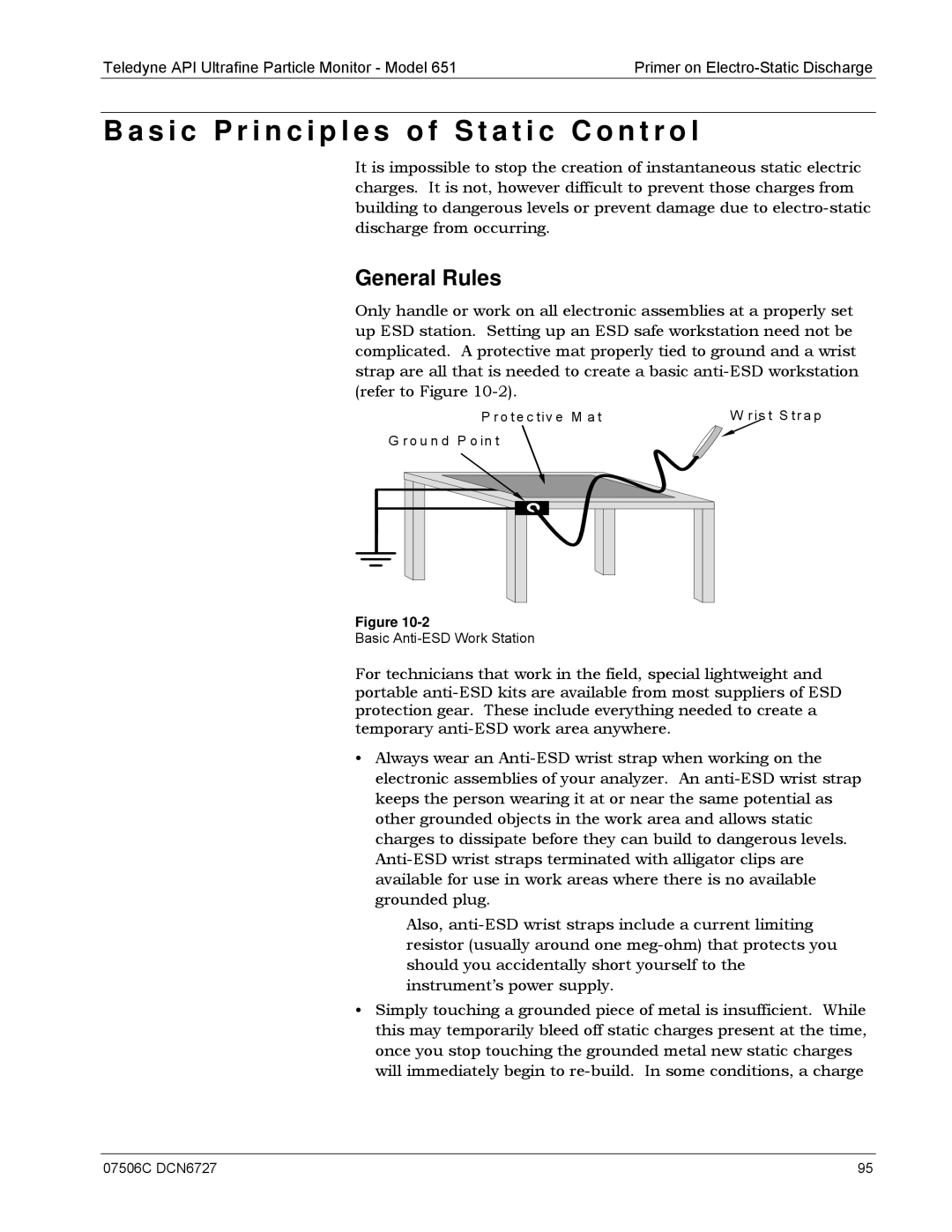
Teledyne API Ultrafine Particle Monitor - Model 651Primer on
B a s i c P r i n c i p l e s o f S t a t i c C o n t r o l
It is impossible to stop the creation of instantaneous static electric charges. It is not, however difficult to prevent those charges from building to dangerous levels or prevent damage due to
General Rules
Only handle or work on all electronic assemblies at a properly set up ESD station. Setting up an ESD safe workstation need not be complicated. A protective mat properly tied to ground and a wrist strap are all that is needed to create a basic
P ro te c tiv e M a t | W ris t S tra p |
G ro u n d P o in t
Figure
Basic
For technicians that work in the field, special lightweight and portable
•Always wear an
Also,
•Simply touching a grounded piece of metal is insufficient. While this may temporarily bleed off static charges present at the time, once you stop touching the grounded metal new static charges will immediately begin to
07506C DCN6727 | 95 |
